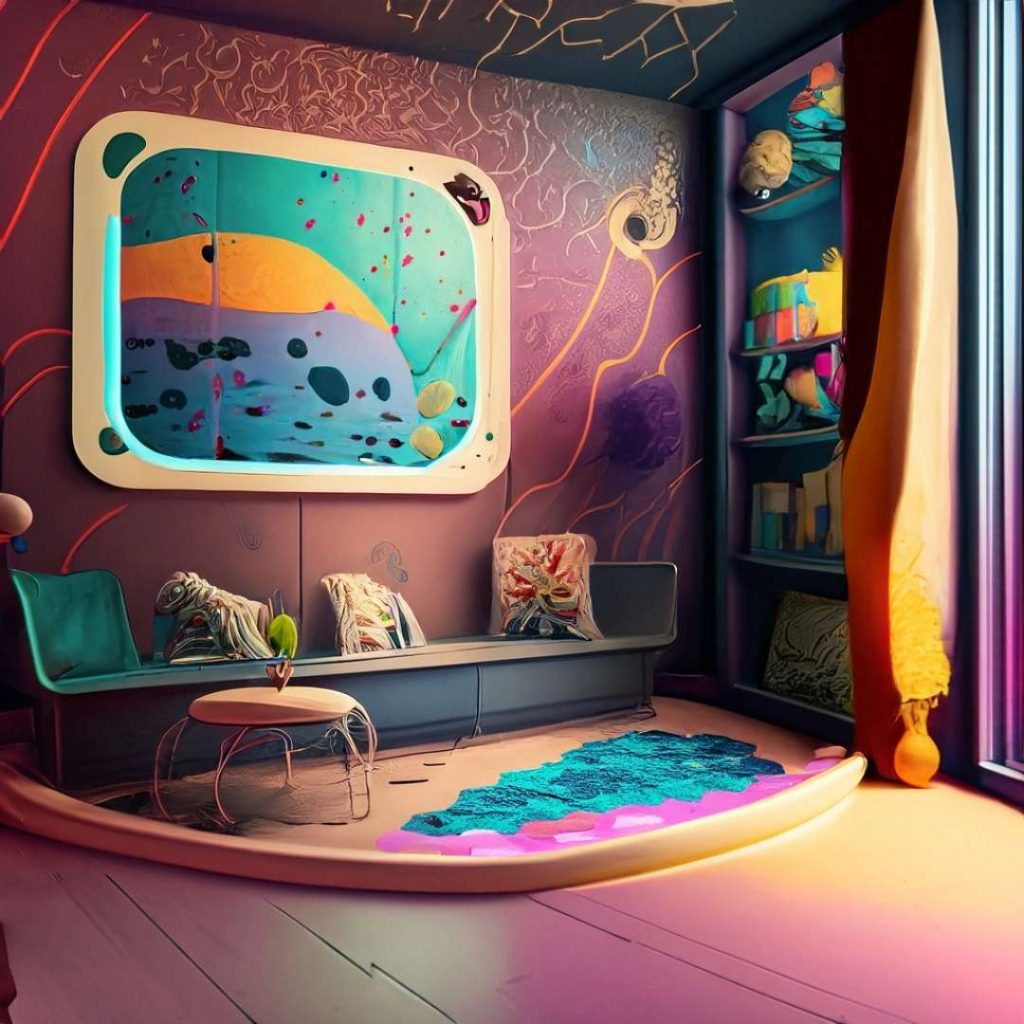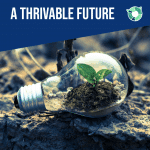The paragraph beneath delineates a typical day in the real life of someone with autism, myself. However, my autism isn’t just autism now. As a result of no autism inclusion, I’m burned out.
The thick, maroon curtains hang closed, blocking out the dawn. I reach for my blue-tinted, light-blocking glasses. Then, I take out my nighttime earplugs, do the Shrek and wiggle the wax from my ears with my little finger, and put in daytime earplugs. Sometimes, I do think about building up the wax into a candle. Indeed, the soft light would relax my mind. Furthermore, I don my earmuffs. It’s still not enough to block all the noise. However, it mutes the impact. After that, I slip out of bed, get dressed, and gingerly open the door, scoping the hallway for people. It’s safe, kind of. A person could leap from their room at any point in time and demand from me a cordial ‘good morning’.
Sigh. My flatmates left all the lights on again. Typical neurotypicals. No worries. Now, I have my new glasses. This situation is not what I would consider autism inclusion. However, next to being homeless, I have to put up with it, even if it means others exacerbate my autistic burnout. Apparently, being physically demonstrative to get the message across on what hypersensitivity to sensory stimulation still isn’t socially or legally acceptable. Good thing it’s only me awake. I’m not ready for that awkward moment where I must make small talk lest I’m branded anti-social.
Autistic On The Edge
That is the beginning of every day, for me, an “Autistic on the edge”, dealing with burnout. Why am I dealing with burnout? There is no real autism inclusion. Neurotypicals built the world for neurotypicals. In fact, I’m burned out because there is too much sensory information to process, I have no support, there is minimal autism inclusion (at a prestigious Western Australian university and university accommodation), and I just can’t fake being neurotypical any longer.

The brain of someone’with autism develops differently to a neurotypical, affecting how they process the world.
Source: Adobe Express.
What is Autism?
Now, I’ve just spent 10 minutes ‘stimming with purpose’, crocheting another level on a granny square. This is just to get through another 2 paragraphs of this article. Autistic burnout is very serious and autism inclusion is vital to preventing this. Once upon a time, a few short months ago, in a galaxy not so far away, I used to be able to sit down and type out a lifestyle article in 6 hours flat, with no interruptions.
Ah, but what is autism, you ask? Autism is a neurodevelopmental disorder. In other words, our brains are formed differently. Not only that, our neurons have less connectivity between the hemispheres and we have less white matter in the brain. And, yes, it matters. Hence, the phrase neurodivergence.
Its current official name is Autism Spectrum Disorder or ASD because each one of us is unique and we present differently. However, there are some things we all have in common such as social difficulties, special interests, and repetitive behaviours (otherwise known as stimming, which is short for self-stimulating). Where is that granny square?
What Is Autistic Burnout?
Autistic burnout is its very own special kind of hell for a kind, honest, living soul. It happens because of a lack of autism inclusion. It rolls back to how our brains form. This means sensory stimuli such as noise, light, and smells affect us differently. When someone with ASD is okay, we manage, barely, to process all this sensory information. Enter burnout, and we can no longer process, as we have zero tolerance to sensory stimuli and social situations, and we are unable to mask (pretend to be neurotypical).
This zero-tolerance situation leads to 2 main consequences. One is shutdowns. Shutdowns are when a person can no longer process and they literally shut down. Even going to the toilet is an effort and too much to process. The other consequence is a meltdown. It looks like rage or a temper tantrum, but it isn’t. It isn’t about us getting our own way or even anger. A meltdown is about being unable to process any further and our emotions and frustrations bubble over. When I meltdown, I meltdown and I invent new swearwords that would make a seasoned sailor blush.
What Isn’t Autism Inclusion? Real Experience
To give you a brutal idea of how damaging a shutdown can be, I shut down for 3 days before Easter because one of my flatmates told, not asked, us that she was having someone over and demanded that we sign a piece of paper saying it was okay. This would then facilitate her gaining permission from management for what she wanted. I said no. I’ve been dealing with burnout since November. I have to take care of myself. After my response, she got confrontational. Then management jumped onto me. I shut down for 3 days, barely able to eat or take care of myself. This is not autism inclusion and seriously, it’s not acceptable behaviour for adults either.
What Autism Inclusion Looks Like
People with ASD can not just adapt and adjust to the neurotypical world. Obviously, we can not, because our brains are different. This means neurotypicals need to adapt and adjust to people with ASD. That is where autism inclusion plays a part. Autism inclusion means neurotypicals adapting and adjusting so that we neurodivergents can not only function but also excel in our specialities to contribute to creating a thrivable world. You see, if you want the best someone with autism has to offer, we need accommodations.
You want. We need. Let’s negotiate.
Autism inclusion looks like making reasonable accommodations. This means choosing light fittings and levels appropriate for someone with sensitivities. It means creating a soft-sounding environment and minimising harsh noise. Make a safe space in the office, educational facility, or shared accommodation for the ASD person.
Autism inclusion involves allowing the person with ASD to have ASD. In other words, if we need to pace and stim for 5 or 10 minutes, let us, and don’t gawk like a bunch of blowfish. If we must flap our hands and say ‘bla, bla, bla’ repetitively, deal with it. We will eventually get back to work where you will see us at our best.
We need time out when we are overwhelmed. Seriously, y’all look daft with your jaws dropping like you ain’t never seen Rainman. And, no, don’t take us to a casino where we will get mega-overwhelmed and wig out just because you want to make a profit off of our special interests and hyperfixations. What are you? Criminals?

AI image of a sensory room concept.
Source: Adobe Express.
Current Gaps in Autism Inclusion
Lighting For Autism Inclusion
Gee, the Grand Canyon in Arizona has a smaller gap than the current gap in Autism inclusion and I ain’t just whistling dixie (and you can if you want, because my headphones are on). The gaps in autism inclusion are huge. Whether it’s the shops or your local uni accommodation, the office or the library, those glaring fluorescent lights are mentally exhausting to process. Yup, that’s right folks, us on the ASD can see fluorescent flickering and we have to process that. Not only that, but those harsh, bright, hideous colours neurotypicals think are so awesome, don’t sit well with us.
Sound For Autism Inclusion
Other gaps. Tap, tap, tap, now stop that, you neurotypical you, or I’m a tap you on the head. Noise. Noise is a big one from aeroplanes to sirens, garbage trucks to notification sounds. Some things I can control. The first thing I do with a new laptop or phone is goodbye notifications, along with sounds. It breaks my concentration, which can be difficult to hold onto at the best of times. The world is an incredibly noisy place, with cars rushing and people talking. It’s all information we must process. We process this information more consciously than neurotypicals, which leads to overwhelm.
Sensory Rooms For Autism Inclusion
Next, sensory environments. There aren’t enough sensory environments out there. There is a resting room at my university, which I have access to, but whenever I try to get in there, it’s occupied. I can’t imagine why. Some places are progressive, such as airports, understanding the needs of those with ASD. However, most places just don’t get that the overwhelm of what a neurotypical takes for granted leads to days of being unable to function for a neurodivergent. In all public places, from hospitals to courtrooms, to anything where there will be a huge mass of people (masses involve more than 2 people), sensory rooms need to be built. These sensory rooms should only be available for neurodivergents, too. Sorry Mum, find a new place for your screaming baby while we chill out before we meltdown and make your baby seem like it’s silent.
How Can We Improve?
The biggest thing any neurotypical can do to improve is to stop being so neurotypical and understand that you share the globe with a very special 1% of the population known as the Aulite. Furthermore, here are a few more ideas, based on what we have discussed and my personal experience.
- Inform yourself of autism. Don’t just take the person’s lived experience word for it. It is a spectrum, not an absolute.
- Raise awareness. We are everywhere.
- Give us online options for meetings and allow us to have our cameras off and not look at you. Even that can be too much to process.
- Choose appropriate lighting and colours.
- Soundproofing rooms, whether business, offices, or bedrooms.
- Consider using neutral-smelling detergents and cleansers.
- Have a neutral-smelling deodorant policy.
- Ensure enough sensory rooms or enough space in one sensory room for each neurodivergent.
- Let us have our stim toys and accessories and let us stim as necessary.
- Do not socially overwhelm us.
- Do not bother us with small talk.
- Be patient with us while we process.
- Do not demand. Ask. Accept our response the first time.
If you want the best work from us, you have to give us exceptional treatment.

SDG10 Reduced Inequalities.
Source: UN Communications Materials.
Achieving the UN SDGs Through Autism Inclusion
“The 2030 Agenda for Sustainable Development, adopted by all United Nations Member States in 2015, provides a shared blueprint for peace and prosperity for people and the planet, now and into the future. At its heart are the 17 Sustainable Development Goals (SDGs), which are an urgent call for action by all countries – developed and developing – in a global partnership. They recognize that ending poverty and other deprivations must go hand-in-hand with strategies that improve health and education, reduce inequality, and spur economic growth – all while tackling climate change and working to preserve our oceans and forests.
The SDGs build on decades of work by countries and the UN, including the UN Department of Economic and Social Affairs“
United Nations
Let’s talk about putting the noose around inequalities and turning into reduced inequalities. Sustainable Development Goal 10 (SDG10) is reduced inequalities. Autism inclusion directly addresses reducing inequalities among those who have a diagnosis of Autistic Spectrum Disorder. There is no need for you to wait on the UN or your government for you to mitigate autism exclusion in your life. There will be someone around you with autism who is awesome. How about learning about autism and finding out about what you can do to improve their lives and make them feel included? After all, that is what inclusion is about: including.
A Thrivable Framework
Systemic Holistic Model
Welcome to the THRIVE Framework. If the SDGs are the goals, the Framework is the path, the strategy, to which team humanity can score points for the future. The THRIVE Framework, otherwise known as the “Systemic Holistic Model“, is made up of 12 Foundational Focus Factors (FFFs), of which I’ve already introduced you to a couple. Together, along with back-casting, this Framework works together to send humanity hurtling towards thrivabililty. Back-casting is setting up your goal and then working your way backwards to find the steps to achieve your outcomes.
Complex, Wicked Problems
A complex, wicked problem refers to a social, cultural, political, or economic problem that is difficult to solve. The term wicked refers to the fact that many problems are hard to define, complicated, and defy conventional thinking or simple answers. The complex, wicked problem here is autism exclusion and the answer is autism inclusion. However, implementing autism inclusion across all areas of life where an autistic walks, is a huge complex, wicked problem. First, there is raising awareness amongst neurotypicals. Then, we have to sell our value and ensure that businesses, academic institutions, and accommodation places understand why accommodating us is going to make them more money. When it comes to social awkwardness and overwhelm, that too, is a complex, wicked problem. That social awkwardness doesn’t translate well when dealing with people in authority.
Entity Model
Entity models aim to navigate what entities can do. An entity can range from a small, single-celled organism to the entire cosmos. These models shape the boundaries that outline their limits. THRIVE’s logo, a ciambella chart, outlines two important boundaries for humanity to adhere to so that it can achieve thrivability. One is a social floor, denoting the minimum requirements for an entity’s survival. The other is an environmental ceiling. This environmental ceiling is where the environment can no longer recover from the damage, potentially depriving entities of what they need to survive.
People with ASD need different things to survive and keep us above the social floor. I can say, I’m living below the social floor in a variety of ways and that isn’t good enough. Without help, however, I can not rise above it. One of the ways I’m reaching out for help is raising awareness on Autism, to get the point across. It isn’t easy. I live with 2 PhD students, 2 Master’s Degree students, and another Bachelor’s student, who are all neurotypical and aren’t interested in viewing the world differently or understanding how their behaviour impacts my mental well-being.
Materiality
Materiality means what is significant and relevant. What is significant and relevant to one entity may not be so to another. This tends to be used in the business context. However, it can be used in the autistic context as well. For instance, those fluorescent lights may not bother the neurotypical, but they can lead someone on the spectrum into a major meltdown if we have to sit under them for half an hour.
Multi-Capital
Multi-capital considers that financial capital is not the only thing that adds value. There are other forms of capital such as human, natural, intellectual, social, or constructed. These other capitals also add value to a business. Yes, autism is a DSM-5 disability. However, those special interests and hyperfixations can be multi-capital to a business. As an example, since I joined THRIVE, I have been the scriptwriter for all the scripts on the THRIVE Framework. My job was to break down these business and academic concepts so that anyone could understand them. The THRIVE Framework Foundational Focus Factors have become a special interest. One of the things I hyperfixate upon is all the various ways I can break it down for any situation to explain why these are great. My hyperfixation on the FFF’s is part of THRIVE’s multi-capital. Capiche?
Systems Thinking
Our actions interconnect with each other and our environment. Systems thinking is a holistic way of viewing these interactions. What impacts one entity or system may affect another entity or system, either for better or worse. Entities must understand and consider their impacts, even the ones they don’t immediately see.
Someone with ASD is brilliant at systems thinking. I’ve seen it in speaking to so many autistic people. This is where special interests and hyperfixation play a role in seeing the world and how actions interconnect. We don’t just see one thing. We follow the mental path looking at all the outcomes. Using systems thinking to solve problems is something an autistic person excels at. What the neurotypical misses, we see with clarity.
Thrivable Autism Inclusion, Including Neurotypicals
I really hope you enjoyed this article on autism from an autistic person. Furthermore, there is a yearning that this has brought you, the reader, clarity on our plight to remain sane and functional in this harsh, cruel world. Yes, to us, at times, it can seem incredibly cruel. Or maybe I just got stuck with a crappy life. Either way, you’ve seen my writing, so you know that regardless of my disabilities and burnout, I do have a way with words to drive the point home, and maybe elicit a giggle or two out of you.
If you want more of what we got here at THRIVE keep in touch (not too close, I don’t like body contact), via social media platforms, such as LinkedIn, X, Instagram, and Facebook. However, you could subscribe to our YouTube channel, listen to our podcasts, sign up for our newsletter, stay up to date with our blogs, attend our free webinars, or even join us as a volunteer to make an even bigger difference in this world.

















